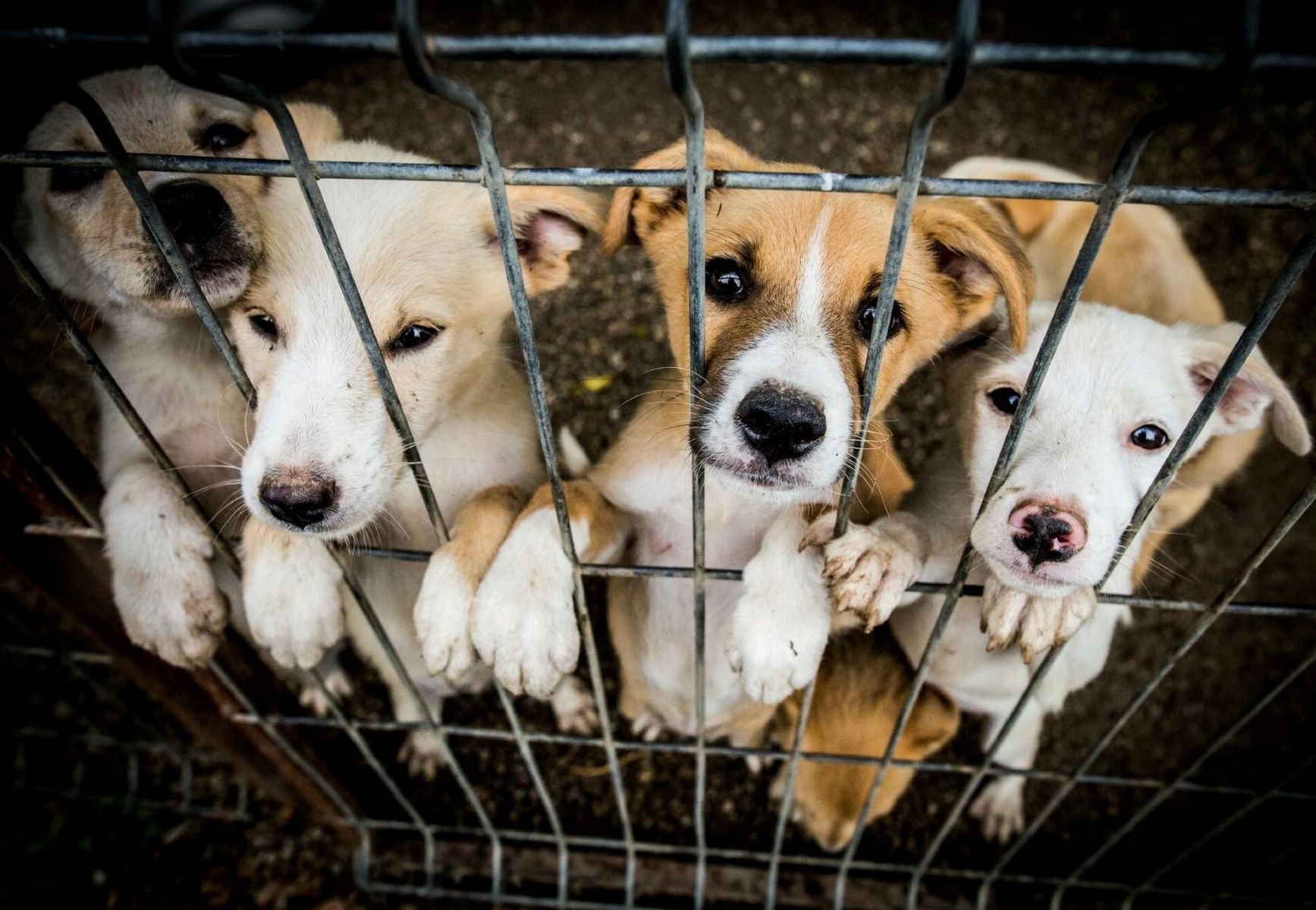
Ever wondered what makes animal shelters so special? Well, you're about to find out! Animal shelters are more than just temporary homes for pets in need; they're lifelines for countless animals and a testament to human kindness. From the heartwarming stories of rescue and adoption to the tireless efforts of volunteers, these places are buzzing with tales of hope and survival. Animal shelters play a crucial role in our communities, offering a second chance to furry pals who've had a rough start. So, buckle up as we dive into the fascinating world of animal shelters, uncovering 27 facts that will surprise, inspire, and maybe even motivate you to lend a helping hand. Ready to have your heartstrings tugged? Let's get started!
Key Takeaways:
- Animal shelters in the U.S. help millions of pets find new homes each year, thanks to dedicated volunteers and innovative programs that improve animal welfare.
- The future of animal shelters looks bright, with technology, sustainability, and community partnerships shaping a more compassionate and effective approach to animal care and adoption.
Understanding Animal Shelters
Animal shelters play a crucial role in communities around the world. They provide a safe haven for lost, abandoned, or surrendered pets and work tirelessly to find them new homes. But there's more to these sanctuaries than meets the eye. Let's dive into some fascinating facts about animal shelters.
-
Annual Intakes: Every year, approximately 6.5 million companion animals enter shelters in the United States alone. This staggering number highlights the ongoing need for animal shelters and the services they provide.
-
Adoption Rates: Despite the high intake numbers, about 3.2 million shelter animals are adopted each year in the U.S. This includes roughly equal numbers of dogs and cats, showcasing the success shelters have in finding animals new homes.
-
Stray vs. Surrendered: Of the animals entering shelters, approximately 710,000 are lost pets that are returned to their owners. Interestingly, dogs have higher reclaim rates than cats, likely due to more identifiable information like tags or microchips.
The Role of Volunteers
Volunteers are the backbone of many animal shelters, providing essential care and attention to animals in need.
-
Volunteer Participation: Thousands of volunteers across the globe dedicate their time to animal shelters. Their roles can vary from walking dogs, cleaning cages, to helping with adoption events.
-
Impact on Animal Welfare: Volunteer efforts significantly improve the quality of life for shelter animals. Socialization, exercise, and affection reduce stress and make animals more adoptable.
Shelter Operations and Challenges
Running an animal shelter is no small feat. It involves a lot of logistics, resources, and heart.
-
Funding Sources: Many shelters operate on donations, grants, and fundraising events. Government-funded shelters exist, but private donations are crucial for operational costs and improvements.
-
Space Limitations: Space is a premium resource in shelters. To manage populations, some shelters implement foster programs, which also help socialize animals and make them more suitable for adoption.
-
Euthanasia Rates: Thankfully, euthanasia rates have been declining over the years due to better spay/neuter programs, increased adoptions, and more effective shelter management practices.
Educational Programs and Community Involvement
Shelters do more than house animals; they also serve as educational centers for the community.
-
Awareness Campaigns: Many shelters run campaigns to educate the public on responsible pet ownership, the importance of spaying/neutering, and how to prevent animal homelessness.
-
Youth Programs: Programs for children and teenagers often include shelter tours, animal care classes, and volunteer opportunities, fostering a sense of compassion and responsibility towards animals.
The Future of Animal Shelters
Innovation and community support are shaping the future of animal shelters.
-
Technology in Adoption: Online platforms and social media are increasingly important tools for promoting animals available for adoption, reaching a wider audience than traditional methods.
-
Sustainability Practices: Some shelters are adopting green practices, such as using eco-friendly cleaning supplies and installing solar panels, to reduce their environmental footprint.
-
Collaborations for Animal Welfare: Partnerships between shelters, veterinarians, and animal welfare organizations are strengthening, leading to better care and more comprehensive services for animals.
-
Increased Focus on Mental Health: Recognizing the stress shelter life can place on animals, more shelters are incorporating enrichment programs and behavioral assessments to ensure animals are not just physically healthy, but mentally and emotionally well, too.
-
Community TNR Programs: Trap-Neuter-Return (TNR) programs for feral cats are becoming more common, helping to control populations and reduce the number of kittens entering shelters.
-
Innovative Housing Solutions: From cat cafés partnering with shelters for adoption events to mobile adoption units, creative solutions are being implemented to help animals find homes faster.
-
Global Networks: Shelters are increasingly networking with international rescue organizations to save animals from dire situations abroad, highlighting the global nature of animal welfare.
-
Specialized Training for Shelter Staff: Training in animal behavior, stress management, and medical care is becoming more prevalent, ensuring staff can provide the best care possible.
-
Public Engagement: Successful shelters actively engage their communities through social media, open houses, and participation in local events, creating strong support networks for their missions.
-
Legislative Advocacy: Many shelters also engage in advocacy, pushing for laws and policies that protect animals and promote welfare, such as anti-cruelty laws and regulations on breeding.
-
Adoption Follow-up: To ensure successful placements, some shelters have begun implementing follow-up programs, checking in on adopted animals and offering support to new pet owners.
-
Increased Special Needs Adoptions: There's a growing trend in adopting animals with special needs, as shelters highlight their stories and the joy they can bring to the right home.
-
Microchipping: Microchipping all animals before adoption is becoming standard practice, significantly increasing the chances of lost pets being reunited with their owners.
-
Financial Assistance Programs: Recognizing that cost can be a barrier to adoption, some shelters offer financial assistance for adoption fees, veterinary care, and even pet supplies.
-
Educational Partnerships: Collaborations with schools and educational institutions are helping to integrate animal welfare into curriculums, fostering early awareness and empathy.
-
Senior and Veteran Programs: Programs specifically designed for seniors and veterans to adopt pets at reduced fees are proving mutually beneficial, offering companionship to people and homes to animals.
-
Crisis Response Teams: Shelters often have teams ready to respond to emergencies, from natural disasters to large-scale animal rescues, demonstrating their commitment to animal welfare in all situations.
A Final Look at Animal Shelters
Animal shelters play a crucial role in our communities, providing a safe haven for countless animals in need. From offering medical care to finding forever homes, these institutions work tirelessly to ensure the well-being of our furry friends. Volunteers and staff members are the unsung heroes, dedicating their time and love to make a difference. Remember, adopting a pet isn't just about saving an animal; it's about enriching your own life with unconditional love and companionship. Supporting local shelters, whether through adoption, donations, or volunteering, makes a significant impact. Let's not forget, every animal deserves a chance at a happy, healthy life. By choosing to adopt, you're not just gaining a pet; you're saving a life. So, next time you're considering adding a four-legged member to your family, think adoption first. Your perfect companion might just be waiting for you at a local shelter.
Frequently Asked Questions
Was this page helpful?
Our commitment to delivering trustworthy and engaging content is at the heart of what we do. Each fact on our site is contributed by real users like you, bringing a wealth of diverse insights and information. To ensure the highest standards of accuracy and reliability, our dedicated editors meticulously review each submission. This process guarantees that the facts we share are not only fascinating but also credible. Trust in our commitment to quality and authenticity as you explore and learn with us.


